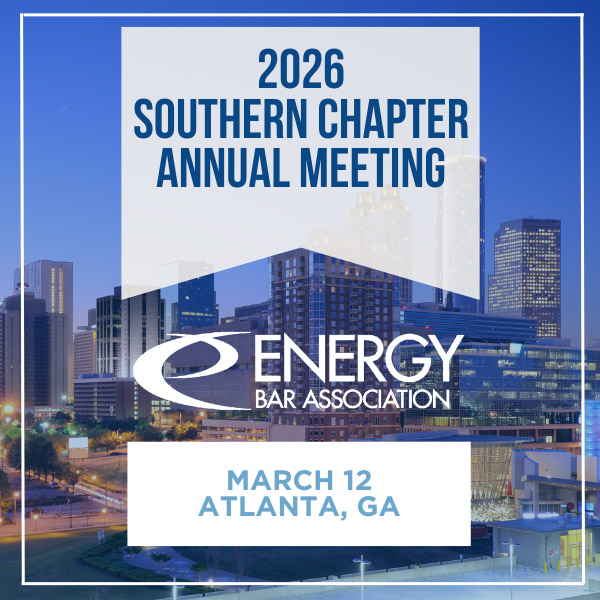FERC has approved CAISO’s proposal for implementing the Extended Day-Ahead Market (EDAM) “access charge” within its own balancing authority area.
Approved by FERC in June 2024, the access charge is a market mechanism designed to allow transmission owners (TOs) to recover revenue shortfalls they incur from transitioning their assets into EDAM, such as the loss of revenues stemming from reduced sales of short-term transmission service in the West’s existing bilateral electricity market. (See FERC Approves EDAM Tx Revenue Recovery Plan.)
The access charge framework is available to all EDAM participants. But because EDAM is not a full RTO, each participating entity is responsible for developing its own rules for implementing the mechanism within its BAA and filing the related tariff revisions with FERC. For that reason, the commission’s Feb. 20 order covers only CAISO and the treatment of the ISO’s participating transmission owners (PTOs) (ER25-437).
The EDAM access charge framework approved by commission in 2024 comprises a “three-component rate structure.”
-
- Component 1 allows a TO to recover revenue shortfalls related to the transition from bilateral market transmission service to day-ahead market service, including market transfers that displace revenues expected from sales of short-duration non-firm and firm point-to-point transmission service.
- Component 2 allows a TO recover a portion of the costs not reflected in the three-year “lookback” associated with the first component. That can include revenue shortfalls “from foregone sales of non-firm and short-term firm transmission service over certain new network upgrades and associated with the release of transmission capacity resulting from the expiration of EDAM legacy contracts,” FERC’s June 2024 order noted.
- Component 3 enables a TO to recoup sales losses attributable to wheeling through an EDAM BAA or the CAISO BAA in excess of the total net EDAM transfer of the BAA, with costs based on the transmission used to wheel energy completely through the TO’s system.
CAISO-specific Elements
CAISO’s specific application of the access charge must differ from that of other EDAM participants because the ISO already is functioning with an organized day-ahead market, so its PTOs will not be transitioning out of the bilateral market upon launch.
The CAISO proposal contains some standard elements of the approved access charge framework, such as a provision allowing the ISO’s PTOs to conduct an annual EDAM access charge “true-up” process to ensure they are compensated when other EDAM BAAs benefit from using the PTOs’ systems for transfers.
The proposal also stipulates that each CAISO PTO will use the three-component rate structure to establish its EDAM recoverable revenue requirement within its existing high- and low-voltage transmission revenue requirement. The aggregate of those estimates will make up the “EDAM recoverable revenue” for the entire CAISO BAA, the ISO said.
But because CAISO already has a day-ahead market, application of the three recovery components will differ from other EDAM participants.
For example, in non-CAISO BAAs, Component 1 is intended to capture an “approximation” of transmission services displaced by EDAM transfers — such as firm or non-firm point-to-point transmission services. But those services don’t exist in the ISO. Instead, a similar displacement will occur in CAISO when scheduling points at the ISO’s border are converted into internal interties in EDAM.
As CAISO explained in its filing, the wheel access charge (WAC) revenues that ISO PTOs historically have collected at those scheduling points no longer will accrue when those points become EDAM internal interties. To compensate for that lost revenue, CAISO proposed to allow each PTO to include within its Component 1 estimate the “appropriate portion” of historical WAC revenue for each scheduling point that corresponds with an EDAM internal intertie, subject to a true-up calculation.
“CAISO states that this is the equivalent of the limit equation established for the EDAM transmission owners under the accepted EDAM framework, but reflects the unique situation of the PTOs in CAISO,” FERC noted in its order, which accepted the ISO’s treatment of all three rate components with no requested changes.
“We find that CAISO’s proposal is appropriately tailored to the unique circumstances of the PTOs, which differ from that of EDAM transmission owners,” the commission wrote. “For instance, because the specific types of transmission service that Component 1 revenues are intended to capture do not exist in CAISO, we find reasonable CAISO’s proposal to enable each PTO to include within Component 1 of its EDAM recoverable revenue requirement the appropriate portion of the historical wheeling access charge revenue forgone for each scheduling point that corresponds with an EDAM internal intertie.”
The commission also approved CAISO’s proposal to allocate any EDAM access charges assessed to the CAISO BAA by other EDAM entities back to CAISO scheduling coordinators based on their share of gross load in the ISO.
“We find that the proposed approach allocates costs at least roughly commensurate with estimated benefits, because it allocates EDAM transmission costs to beneficiaries within the CAISO BAA in proportion to their benefit from EDAM,” the commission wrote.



